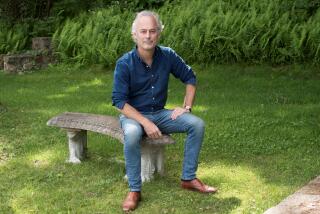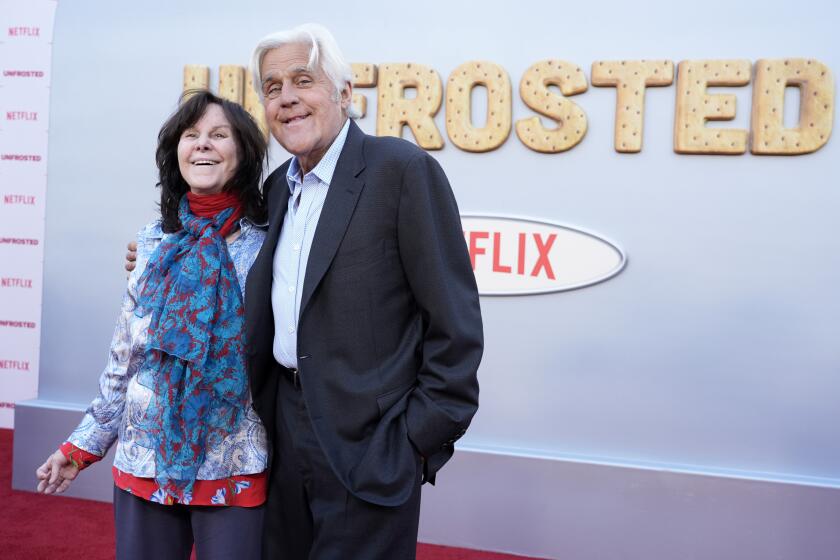Off The Shelf: Mark Twain comes out to play
- Share via
This year promises to be the year of Mark Twain. It marks the 175th anniversary of his birth, the 100th anniversary of his death and the 125th anniversary of the American publication of “Adventures of Huckleberry Finn.”
Because I have written about Twain and his books -- and because my white hair sometimes prompts others to say I look like him -- invitations to lecture have trickled in for some months now. For Hal Holbrook -- who has been channeling Twain for more than 40 years in his one-man performance “Mark Twain Tonight!” -- 2010 looks like a boom year. Indeed, I wouldn’t be surprised to learn that long lines are already forming outside the Mark Twain House in Hartford, Conn., or his boyhood home in Hannibal, Mo.
Twain’s first book for the young, “The Adventures of Tom Sawyer,” presents the classic view of American boyhood. There are plenty of books about American girlhood (from “Little Women” to just about anything by Judy Blume), but just as there are fewer readers among boys, there are fewer opportunities to encounter boyology in books and certainly none to equal this one.
The scene that’s most remembered, of course, is the whitewashing of the fence, as Tom hoodwinks his friends into doing this chore for him. But there are plenty of other moments that highlight an American era so mythic that many seem to recall it as if from their own childhoods, a nostalgic glimpse of small-town life in which youngsters play hooky, Becky Thatcher is a playground sweetheart and Injun Joe supplies goose bump terrors.
That sunshiny offering was followed by another kind of book.
When I was young, “Adventures of Huckleberry Finn” made me want to build a raft. But then, I was lucky to read this book outside of school, when I was stuck at my grandmother’s house one summer with little to do. Later, I would read it again for class -- and, later still, to teach it -- and realize that, as Lionel Trilling said, it was “America’s most eloquent argument against racism,” although it can require some thorny discussions to arrive at that point.
Over the years I’ve discovered that, when it comes to discussing “Huckleberry Finn” in the classroom, much depends on the teacher: Given misconceptions and the occasional boneheaded school board, you need someone sensitive and courageous. But it’s worth the effort, in or out of class. As Twain himself said, “I never let schooling interfere with my education.”
The third Twain book I recommend for kids is “The Prince and the Pauper,” although I confess it’s been an uphill battle encouraging people to read this novel. In an introduction I once wrote to the novel, I suggested that some folks resist the book because it’s set in Merry Olde England rather than in the Old Timey America that most associate with Twain, and also because of a curious belief that they must have already read it since the story (of a prince and a pauper exchanging places) sounds so familiar.
But I like the novel because, besides a dandy yarn, it offers lessons in compassion. When you hear people say, “There but for the grace of God go I,” you sometimes hear a sigh of relief that another’s misfortune hasn’t touched them. But when Twain says those same words here, he stirs sympathy and identification.
So, visions of American boyhood, consciousness of racism, evocations of compassion -- these are hallmarks of the author whom William Dean Howells once called “the Lincoln of our literature.” What’s missing from this list, of course, is his humor. The man was funny, sometimes in a pointed way: speculating about what knights in armor might do if they got an itch or observing, “I don’t believe in Hell but I’m afraid of it.”
Sid Fleischman collects many of these funny bits in “The Trouble Begins at 8,” the only really satisfactory biography of Twain for younger readers. Adults have great biographies by Justin Kaplan (“Mr. Clemens and Mark Twain”) and Everett Emerson (“The Authentic Mark Twain”), but for kids, there’s this one delight.
Unlike other offerings that march their weary way through a chronology of facts, Fleischman’s life of Twain is composed by a witty author bent on having a good time. If there’s any shortcoming, it’s that Fleischman has so much fun with Twain’s early years that when he finally looks up, he has to squeeze the later decades in and speed to a conclusion.
But that’s a familiar phenomenon to readers of Twain: You get so absorbed you lose track of time and end up well beyond your destination.
Griswold teaches at San Diego State. His most recent book is “Feeling Like a Kid: Childhood and Children’s Literature.”
More to Read
The biggest entertainment stories
Get our big stories about Hollywood, film, television, music, arts, culture and more right in your inbox as soon as they publish.
You may occasionally receive promotional content from the Los Angeles Times.










